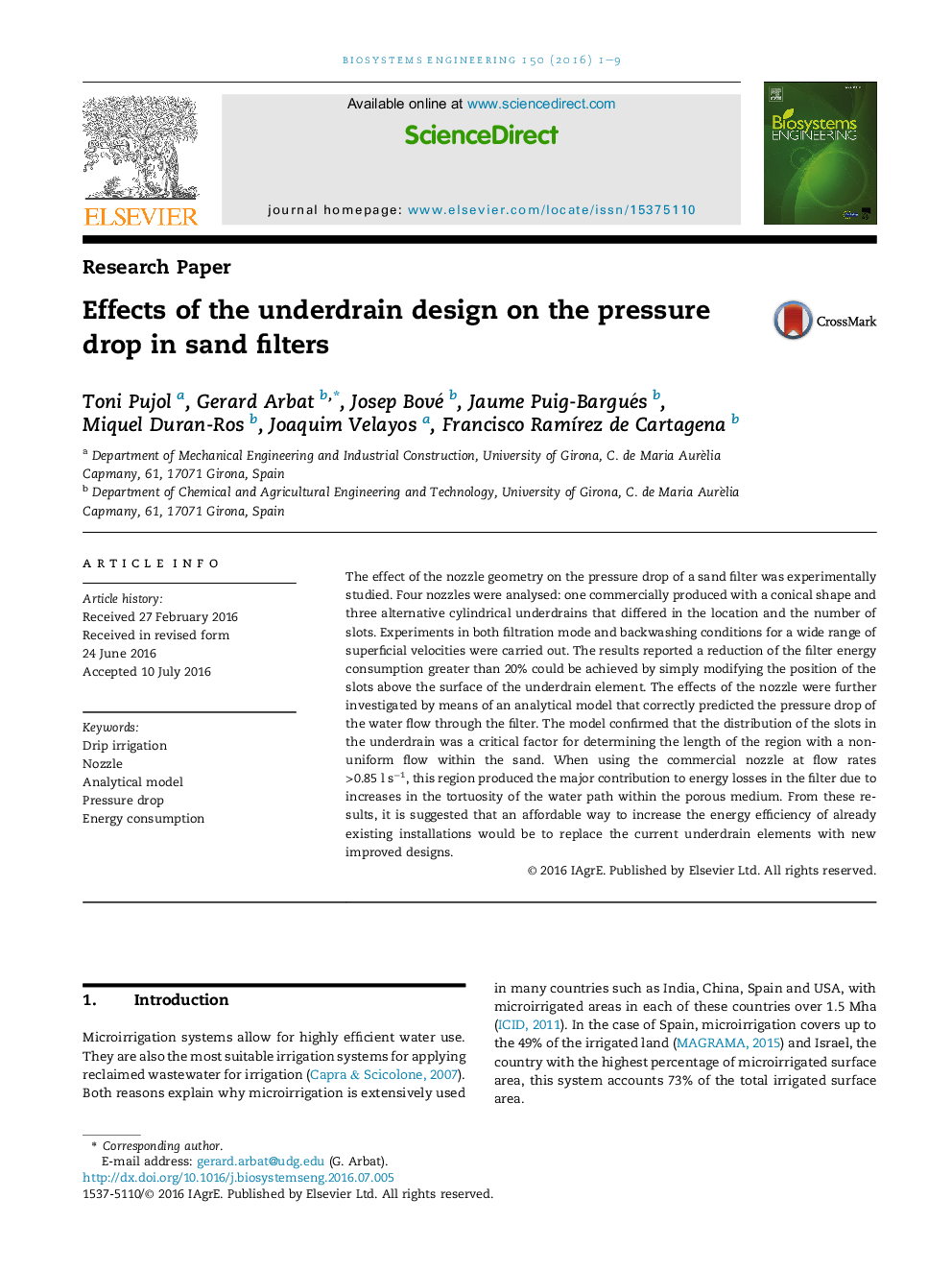| Article ID | Journal | Published Year | Pages | File Type |
|---|---|---|---|---|
| 8055063 | Biosystems Engineering | 2016 | 9 Pages |
Abstract
The effect of the nozzle geometry on the pressure drop of a sand filter was experimentally studied. Four nozzles were analysed: one commercially produced with a conical shape and three alternative cylindrical underdrains that differed in the location and the number of slots. Experiments in both filtration mode and backwashing conditions for a wide range of superficial velocities were carried out. The results reported a reduction of the filter energy consumption greater than 20% could be achieved by simply modifying the position of the slots above the surface of the underdrain element. The effects of the nozzle were further investigated by means of an analytical model that correctly predicted the pressure drop of the water flow through the filter. The model confirmed that the distribution of the slots in the underdrain was a critical factor for determining the length of the region with a non-uniform flow within the sand. When using the commercial nozzle at flow rates >0.85 l sâ1, this region produced the major contribution to energy losses in the filter due to increases in the tortuosity of the water path within the porous medium. From these results, it is suggested that an affordable way to increase the energy efficiency of already existing installations would be to replace the current underdrain elements with new improved designs.
Related Topics
Physical Sciences and Engineering
Engineering
Control and Systems Engineering
Authors
Toni Pujol, Gerard Arbat, Josep Bové, Jaume Puig-Bargués, Miquel Duran-Ros, Joaquim Velayos, Francisco RamÃrez de Cartagena,
